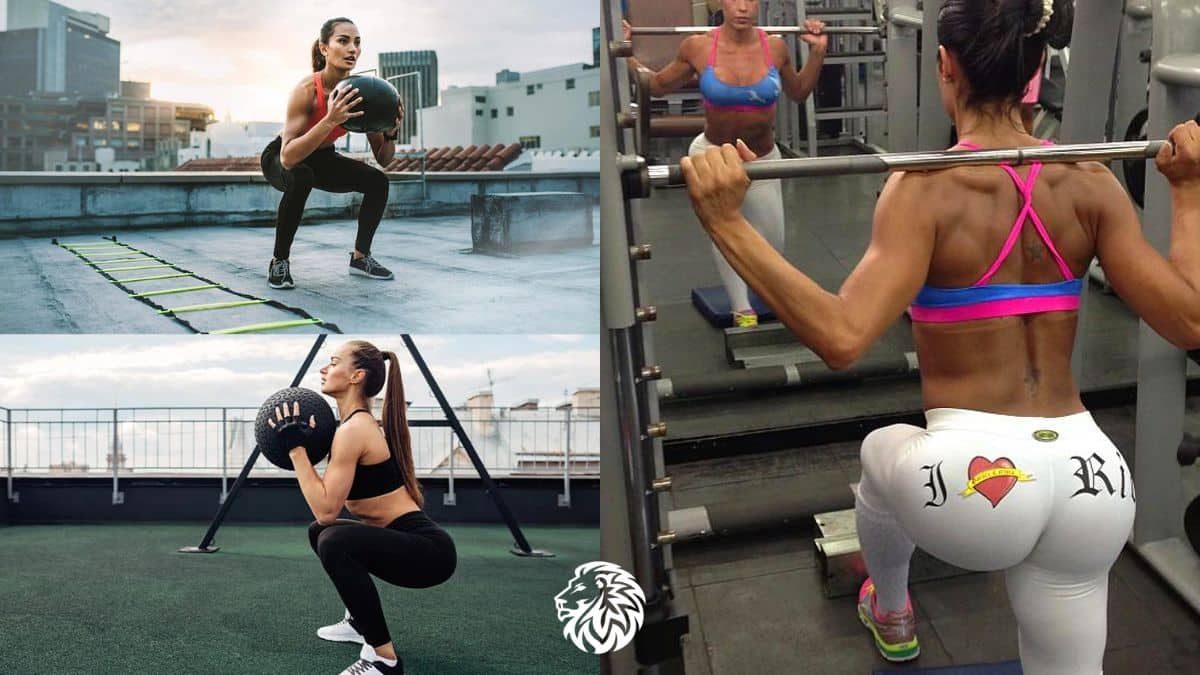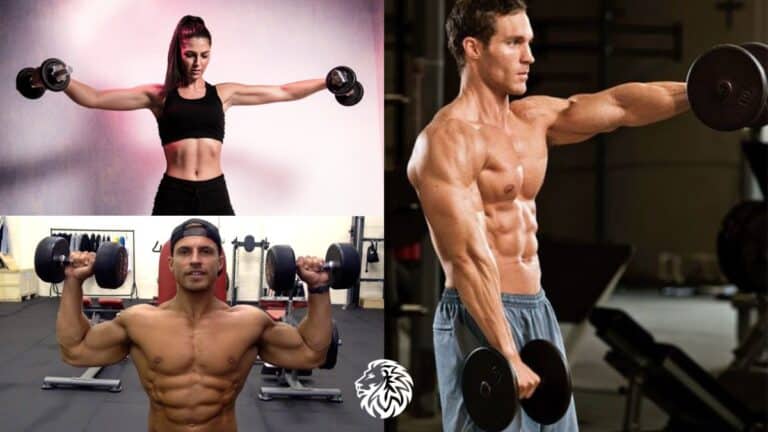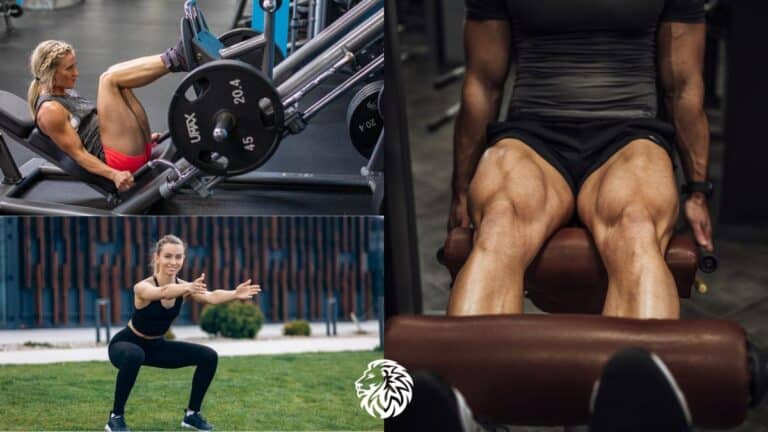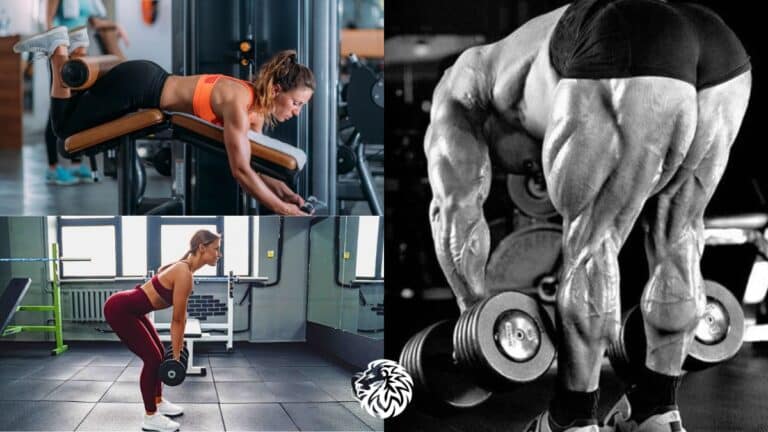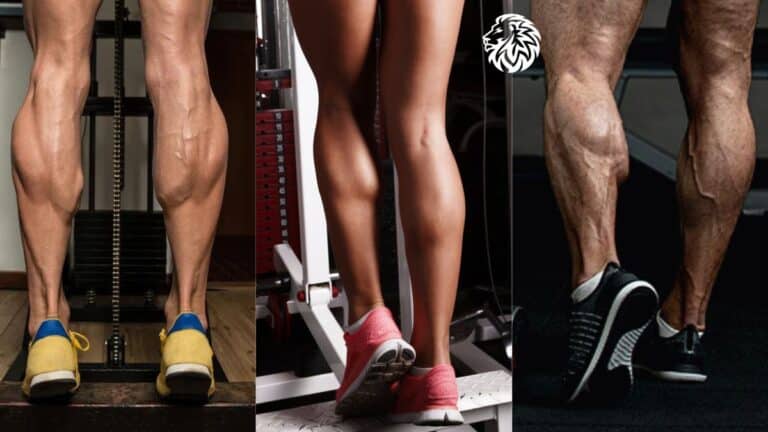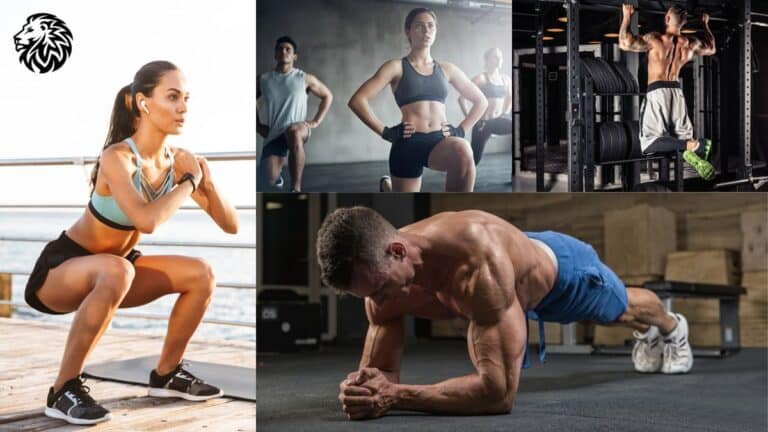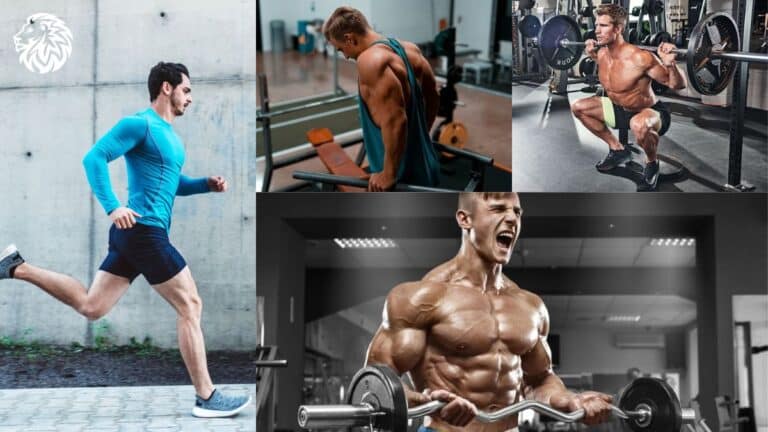People are paying more attention to getting fit and living healthy, which means they’re learning how important it is to have strong gluteal muscles, or glutes. These muscles, including the gluteus maximus, medius, and minimus, aren’t just for looking good. They’re super important for staying fit and healthy.
Having strong glutes helps you do a bunch of everyday things like walking and going up stairs, and also tougher stuff like running and lifting weights. They keep your posture straight, your pelvis in line, and support your lower back. This can help stop or ease lower back pain, which a lot of people get from sitting too much. Plus, if you play sports or do any physical activity, strong glutes make you better by giving you more power and keeping you stable.
Strong glutes also help the rest of your body work better together. They team up with other muscles to make moving around smoother and to lower your chance of getting hurt. This shows that making one part of your body stronger can make your whole body work better and feel great.
Now, let’s talk about how to build those glute muscles with exercise and food. Working out is key because it targets the glute muscles, making them grow and get stronger. You should do big moves like squats and deadlifts that work lots of muscles at once, but also do exercises that focus just on your glutes. Adding in cardio and stretching is important too, so your glutes can be the best they can be.
Food is just as important because it gives you the energy for working out and helps your muscles recover and grow after you exercise. Eating plenty of protein is a must for fixing and building muscle, carbs give you energy, and healthy fats help balance your hormones which is important for making muscles. Don’t forget about vitamins, minerals, drinking water, and eating at the right times to really make your workouts count.
So, mixing the right workouts with good food is the best way to get awesome glutes. This doesn’t just make you look better; it makes your whole body healthier and stronger. Next, we’ll get into the details about the best exercises, food tips, and changes you can make in your life to really get those glutes in shape.
Understanding the Glutes
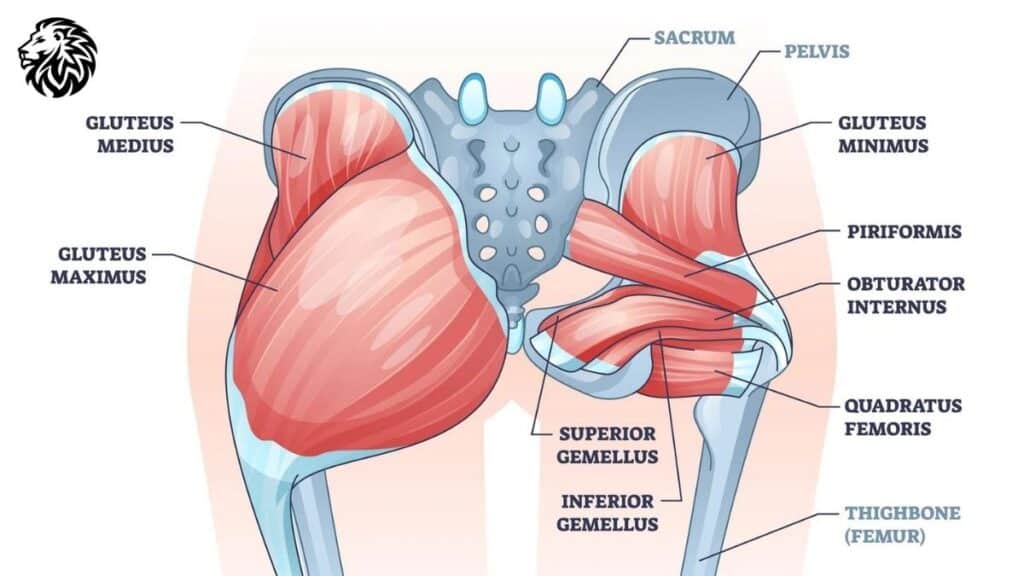
The gluteal muscles, more commonly known as the glutes, are a group of three muscles located in the posterior pelvic region. These muscles play a critical role in a variety of bodily movements and are key to maintaining good posture and mobility. Understanding the anatomy and functions of these muscles is essential for effectively targeting them during workouts and recognizing their importance in everyday activities.
Anatomy of the Gluteal Muscles
- Gluteus Maximus: This is the largest and most superficial of the three gluteal muscles. It’s responsible for the shape of the buttocks and is the most visible of the glute muscles. The gluteus maximus is involved in a range of actions, including extension, abduction, and external rotation of the hip.
- Gluteus Medius: Located partially under the gluteus maximus, the gluteus medius is crucial for stabilizing the pelvis. It plays a significant role in abduction (moving the leg away from the body’s midline) and medial (internal) rotation of the thigh.
- Gluteus Minimus: This is the smallest and deepest of the gluteal muscles. Like the gluteus medius, it is involved in stabilizing the pelvis and contributes to abduction and medial rotation of the thigh.
Functions of the Glute Muscles in Everyday Movements
The gluteal muscles are integral to various everyday movements, demonstrating their importance beyond aesthetic appeal:
- Walking and Running: The glutes are heavily involved in the propulsion phase of walking and running, where they work to extend and externally rotate the hip, providing power and stability.
- Climbing Stairs and Hills: When ascending stairs or hills, the gluteus maximus engages to extend the hip and lift the body upward, while the medius and minimus help stabilize the pelvis.
- Standing Up from a Seated Position: The action of standing up from a seated position primarily involves the gluteus maximus, which extends the hip to raise the body.
- Maintaining Posture: The glutes play a crucial role in maintaining an upright posture. They work to keep the pelvis aligned and support the lower back, which is essential for preventing back pain and strain.
- Lifting and Carrying: During lifting movements, especially when bending and straightening the legs, the gluteus maximus helps to provide power and stability.
- Balancing: The gluteus medius and minimus are particularly important for balancing on one leg, such as when walking or standing on uneven surfaces.
In conclusion, the glutes are not only vital for physical activities and sports but also play a significant role in everyday movements and posture. Their strength and functionality are essential for overall mobility, stability, and injury prevention. The following sections will explore how specific exercises can effectively target these muscles and how a balanced diet can support their development and function.
Exercise Strategies for Glute Development
Developing strong, well-shaped glutes requires a strategic approach to exercise, focusing on both compound and isolation movements. Compound exercises are particularly effective for glute growth as they work multiple muscle groups simultaneously, leading to overall muscle development and improved functional strength.
Compound Exercises for Glute Growth
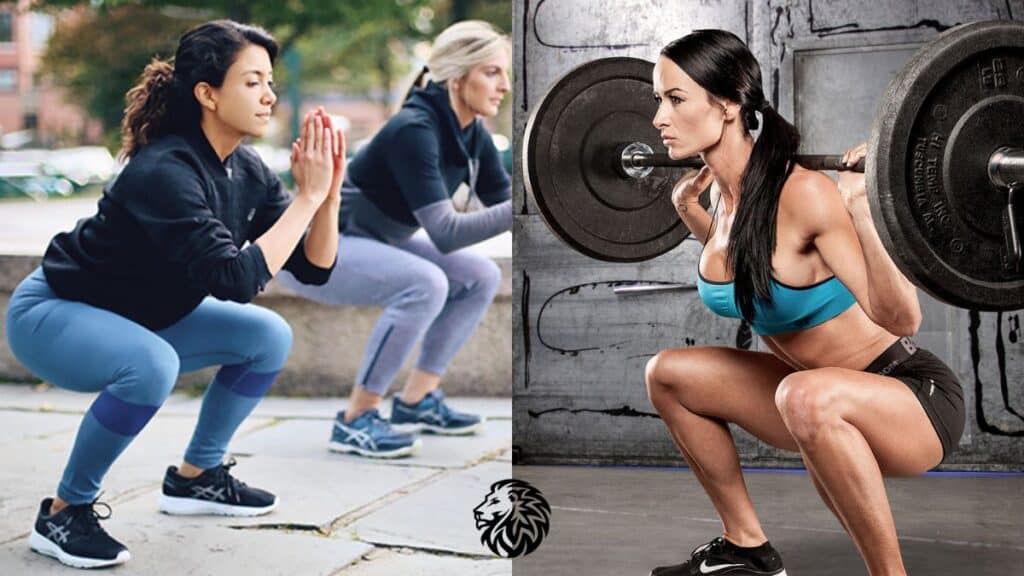
- Squats: Varieties and Techniques
- Traditional Back Squats: This fundamental exercise targets the gluteus maximus along with the quadriceps and hamstrings. Proper form involves keeping the back straight, chest up, and knees tracking over toes.
- Front Squats: By shifting the weight to the front of the body, front squats place more emphasis on the quads but still effectively work the glutes.
- Sumo Squats: A wider stance in sumo squats targets the inner thighs and glutes more intensely.
- Split Squats and Bulgarian Split Squats: These variations challenge stability and focus more intensely on each leg, engaging the glutes effectively.
- Technique Tips: For all squat variations, it’s crucial to maintain proper form by engaging the core, keeping the spine neutral, and driving through the heels to maximize glute activation.
- Deadlifts: Conventional, Sumo, and Romanian
- Conventional Deadlifts: This classic deadlift variation works the entire posterior chain, including the glutes, hamstrings, and lower back.
- Sumo Deadlifts: With a wider stance and toes pointed outwards, sumo deadlifts put more emphasis on the glutes and inner thighs.
- Romanian Deadlifts (RDLs): RDLs focus on the hamstrings and glutes, involving less knee bend and more hip hinge than conventional deadlifts.
- Technique Tips: Keeping the back flat, engaging the core, and pushing the hips back are essential across all deadlift variations to ensure safety and effectiveness.
- Lunges: Forward, Reverse, and Lateral
- Forward Lunges: These target the glutes, quads, and hamstrings. Proper form includes taking a big step forward and lowering the body until both knees are bent at a 90-degree angle.
- Reverse Lunges: By stepping backward, reverse lunges put less strain on the knees and more emphasis on the glutes.
- Lateral Lunges: This variation works the glutes, particularly the gluteus medius and minimus, as well as the inner thigh muscles.
- Technique Tips: Maintaining an upright posture, keeping the front knee in line with the foot, and engaging the core are vital for all lunge variations.
Incorporating these compound exercises into a regular workout routine can significantly enhance glute development. They should be performed with proper form to prevent injury and ensure the targeted muscles are effectively engaged. The next sections will discuss isolation exercises that can further refine and sculpt the glutes, along with dietary recommendations to support muscle growth and recovery.
Isolation Exercises for Targeted Glute Building
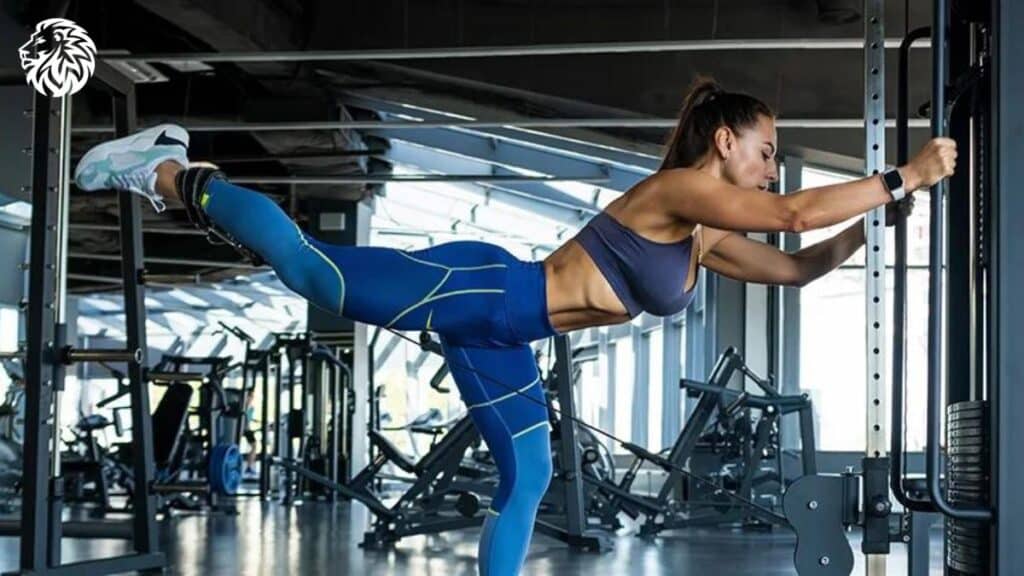
While compound exercises provide a foundation for overall muscle development and strength, isolation exercises are crucial for specifically targeting and refining the glute muscles. These exercises focus more directly on the glutes, allowing for concentrated work on these muscles.
- Glute Bridges and Hip Thrusts
- Glute Bridges: A fundamental glute-building exercise, glute bridges involve lying on your back with feet flat and knees bent, then lifting the hips towards the ceiling. This movement primarily targets the gluteus maximus.
- Single-Leg Glute Bridges: For a more challenging variation, perform the exercise with one leg raised.
- Hip Thrusts: Similar to glute bridges but performed with the shoulders elevated on a bench or step, hip thrusts allow for a greater range of motion and increased glute activation.
- Technique Tips: Focus on squeezing the glutes at the top of the movement and ensure your feet are placed correctly to maximize engagement.
- Donkey Kicks and Fire Hydrants
- Donkey Kicks: Starting on all fours, lift one leg back and up, keeping the knee bent, as if pushing the heel towards the ceiling. This exercise targets the gluteus maximus.
- Fire Hydrants: In the same starting position, lift one knee out to the side, keeping the knee bent. This movement focuses on the gluteus medius and minimus.
- Technique Tips: Keep the core engaged and hips square to the ground to prevent rocking and ensure proper glute engagement.
- Cable Kickbacks
- Cable Kickbacks: Using a low cable machine and ankle strap, kick one leg back against the resistance. This exercise targets the gluteus maximus and helps in sculpting the shape of the buttocks.
- Technique Tips: Maintain a slight bend in the supporting leg and avoid arching the back to keep the focus on the glutes.
Isolation exercises are beneficial for directly targeting specific areas of the glutes, allowing for more detailed sculpting and development. These exercises are especially useful for addressing muscle imbalances and enhancing the shape and size of the glutes. They can be incorporated into a workout routine in conjunction with compound exercises for a comprehensive approach to glute development.
Next, we will explore the dietary considerations necessary to support muscle growth and recovery, ensuring that the hard work put into these exercises translates effectively into visible and functional improvements in glute strength and appearance.
Incorporating Cardio for Lean Glutes
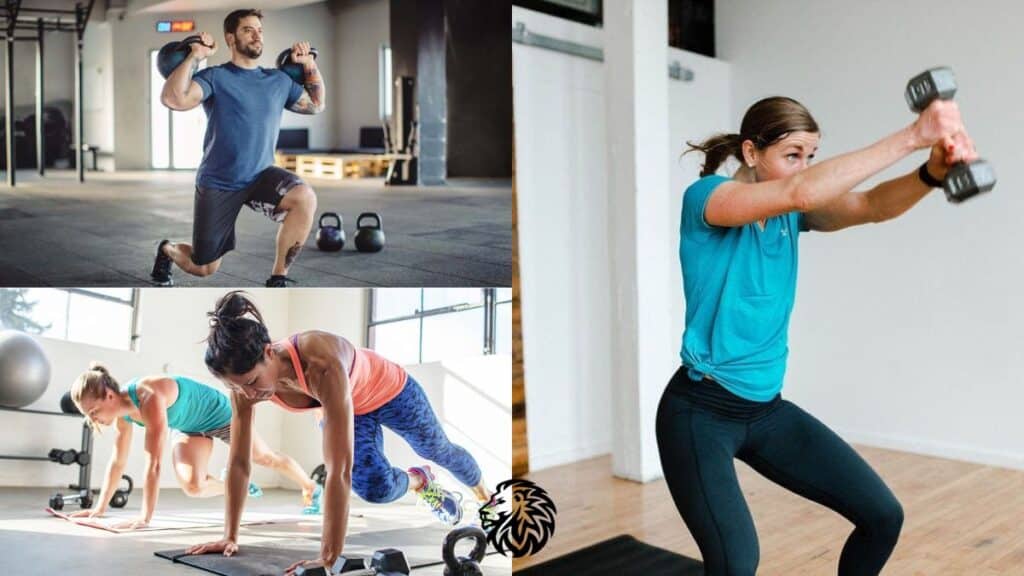
Cardiovascular exercises play a vital role in achieving lean and well-defined glutes. They help in burning excess fat, enhancing endurance, and improving overall body composition. Two effective forms of cardio for sculpting the glutes are High-Intensity Interval Training (HIIT) and stair climbing or hill sprints.
- High-Intensity Interval Training (HIIT)
- Overview: HIIT involves short bursts of intense exercise followed by periods of rest or low-intensity activity. This type of training is effective for burning fat and improving metabolic rate.
- Glute-Focused HIIT Workouts: Include exercises like jump squats, burpees, and mountain climbers that target the gluteal muscles while also providing a cardiovascular challenge.
- Benefits for Glutes: HIIT not only helps in reducing body fat, thereby making the glutes more visible but also incorporates plyometric movements that can aid in building muscle strength and power in the glutes.
- Stair Climbing and Hill Sprints
- Stair Climbing: Using stairs for cardio is a great way to target the glutes and hamstrings. It involves repetitive stepping movements that engage the glute muscles.
- Hill Sprints: Sprinting uphill forces the glutes to work harder due to the increased resistance provided by the incline.
- Benefits for Glutes: Both stair climbing and hill sprints provide intense workouts for the glutes, enhancing muscle tone and endurance while also contributing to overall lower body strength.
Flexibility and Mobility Workouts
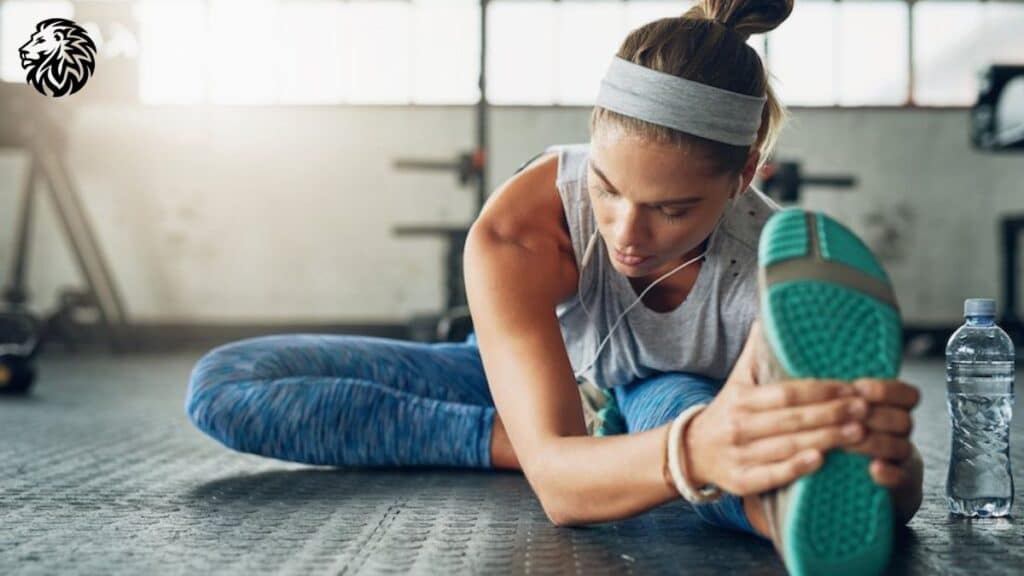
Incorporating flexibility and mobility workouts into a fitness routine is essential for preventing injuries, improving range of motion, and enhancing the effectiveness of glute exercises.
- Stretching for Glute Development
- Importance of Stretching: Stretching helps in relieving muscle tightness, which can inhibit glute growth and lead to imbalances in the body.
- Effective Glute Stretches: Include pigeon pose, seated and standing figure-four stretches, and the butterfly stretch to specifically target the gluteal muscles.
- Yoga and Pilates Exercises for Glutes
- Yoga for Glutes: Certain yoga poses like Warrior III, Bridge Pose, and Chair Pose are effective for strengthening and stretching the glute muscles.
- Pilates for Glutes: Pilates exercises like the clamshell, side leg lifts, and leg kickbacks focus on controlled movements that engage and strengthen the gluteus medius and minimus.
- Benefits for Glutes: Both yoga and Pilates improve core strength and stability, which are essential for proper glute activation and development. They also enhance body awareness, helping in maintaining proper form during glute exercises.
Incorporating a mix of cardio, stretching, and mobility exercises into your workout regimen is crucial for achieving lean, strong, and well-defined glutes. These elements complement strength training by reducing fat, increasing muscle visibility, improving flexibility, and ensuring the overall health and functionality of the gluteal muscles. The next sections will delve into the dietary aspects and lifestyle factors that further support the development of healthy and strong glutes.
Dietary Considerations for Muscle Growth
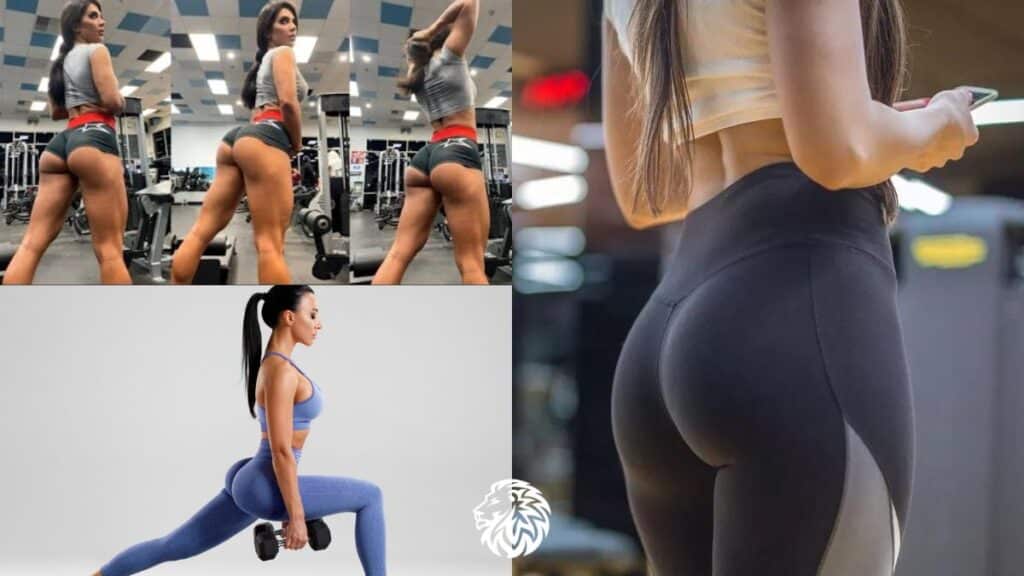
A balanced diet is a cornerstone for building muscle, including the development of glute muscles. Understanding the role of macronutrients, micronutrients, and proper meal planning can significantly enhance the effectiveness of your workout regimen.
Macronutrients for Muscle Building
- Protein: Types and Recommended Intake
- Importance: Protein is essential for muscle repair and growth. It provides the amino acids needed to rebuild muscle tissue that is broken down during exercise.
- Types: High-quality protein sources include lean meats, fish, poultry, dairy products, eggs, legumes, and plant-based alternatives like tofu and tempeh.
- Recommended Intake: The amount of protein needed varies based on individual factors like weight, age, and activity level. Generally, 1.2 to 2.0 grams of protein per kilogram of body weight is recommended for active individuals.
- Carbohydrates: Timing and Sources
- Importance: Carbohydrates are the body’s primary energy source, especially important for fueling intense workouts.
- Sources: Focus on complex carbohydrates like whole grains, fruits, vegetables, and legumes for sustained energy.
- Timing: Consuming carbohydrates before workouts can provide energy, while post-workout carbs can help with recovery.
- Fats: Healthy Fats for Muscle Growth
- Importance: Fats are necessary for hormone production, including hormones like testosterone that play a role in muscle growth.
- Healthy Fats: Include sources like avocados, nuts, seeds, olive oil, and fatty fish rich in omega-3 fatty acids.
Micronutrients and Supplements
- Vitamins and Minerals Essential for Muscle Health
- Key Nutrients: Vitamins D and B complex, calcium, iron, magnesium, and zinc are important for muscle function and recovery.
- Sources: A diet rich in a variety of fruits, vegetables, whole grains, lean proteins, and dairy or dairy alternatives can help meet these needs.
- Role of Supplements in Muscle Development
- Supplementation: Supplements can be useful in meeting nutrient needs, especially for those with dietary restrictions or higher requirements. Common supplements include whey protein, creatine, branched-chain amino acids (BCAAs), and fish oil.
- Consideration: It’s important to consult with a healthcare professional before starting any supplement regimen.
Meal Planning and Timing
- Pre- and Post-Workout Nutrition
- Pre-Workout: Meals should be rich in carbohydrates and moderate in protein to provide energy. Avoid heavy, high-fat meals before exercising.
- Post-Workout: Focus on protein and carbohydrates to aid muscle recovery and replenish glycogen stores.
- Importance of Consistent Meal Timing
- Consistency: Eating at regular intervals helps maintain energy levels and provides a steady supply of nutrients necessary for muscle growth and repair.
- Frequency: Depending on individual metabolism and schedules, some may benefit from 3 main meals and 2-3 snacks, while others might prefer 4-6 smaller meals spread throughout the day.
A well-planned diet rich in macronutrients and micronutrients is essential for muscle growth and recovery. Tailoring your diet to your exercise regimen, with a focus on nutrient timing and quality, can significantly enhance your glute-building efforts. Next, we will explore lifestyle factors that influence muscle development and overall health.
Building strong, well-defined glutes is not only about exercise and diet; lifestyle factors also play a significant role. Proper sleep and recovery, adequate hydration, and effective stress management are essential components that can impact muscle growth and overall physical health.
Importance of Sleep and Recovery

- Sleep for Muscle Repair
- Role of Sleep: During sleep, the body undergoes repair and recovery processes essential for muscle growth. This includes the release of growth hormone, which is vital for muscle development.
- Recommended Duration: Aim for 7-9 hours of quality sleep per night to ensure adequate recovery.
- Active Recovery
- Benefits: Active recovery, involving light physical activity on rest days, can enhance blood circulation, aiding in the repair and rebuilding of muscle tissue.
- Activities: Include low-intensity exercises like walking, yoga, or light cycling.
Hydration and Its Role in Muscle Building
- Importance of Staying Hydrated
- Muscle Function: Muscles are composed of approximately 75% water, making hydration essential for muscle function and growth.
- Hydration and Performance: Adequate hydration is crucial for maintaining performance during workouts. Dehydration can lead to decreased strength, endurance, and recovery rate.
- How Much to Drink
- Guidelines: While individual needs vary, a general guideline is to drink at least 8-10 glasses of water a day. Increase intake before and after exercises, especially in hot and humid conditions.
Stress Management and Its Impact on Muscle Growth
- Effect of Stress on Muscle Development
- Cortisol Production: Chronic stress leads to elevated cortisol levels, a hormone that can impede muscle growth and promote fat storage, particularly in the abdominal area.
- Impact on Recovery: High stress levels can also hinder recovery processes, affecting muscle development and overall health.
- Stress-Reduction Techniques
- Mindfulness and Relaxation: Practices like meditation, deep breathing, or progressive muscle relaxation can help manage stress levels.
- Balanced Lifestyle: Ensuring a balance between work, leisure, and physical activity is vital for overall stress reduction.
In summary, optimizing glute development extends beyond the gym and kitchen. Adequate sleep, proper hydration, and effective stress management are key factors that contribute to muscle growth, recovery, and overall well-being. Paying attention to these aspects can greatly enhance your fitness journey, leading to better results and a healthier lifestyle. The next sections will discuss how to track progress and adjust routines for continued improvement, along with common mistakes to avoid in your glute-building journey.
Tracking Progress and Adjusting the Routine
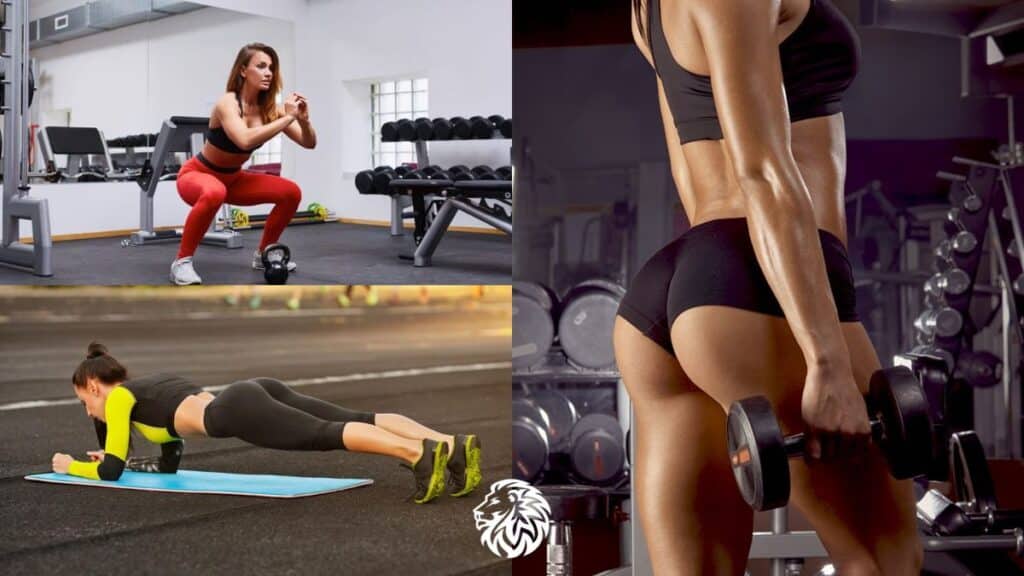
To achieve optimal results in glute development, it’s important to track progress and make necessary adjustments to your routine. This involves setting realistic goals, regularly monitoring progress, and knowing when and how to modify your workout and diet plan.
Setting Realistic Goals and Expectations
- Defining Clear Objectives
- Establish specific, measurable, achievable, relevant, and time-bound (SMART) goals. For example, increasing hip thrust weight by 10% in 8 weeks.
- Set both short-term and long-term goals to maintain motivation and focus.
- Realistic Expectations
- Understand that muscle growth and body changes take time and consistency. Results will not happen overnight.
- Recognize individual variations in body types and genetic predispositions that affect muscle development rates.
Monitoring Progress: Measurements, Strength Gains, and Visual Changes
- Tracking Measurements
- Use a tape measure to track the size of your glutes regularly. Consistent measurement methods are key.
- Take measurements under the same conditions each time (e.g., same time of day, same day of the week).
- Observing Strength Gains
- Keep a workout log to track increases in weights, reps, and overall exercise performance.
- Strength improvements are a clear indicator of muscle development.
- Visual Assessments
- Take regular progress photos in consistent lighting and poses to visually compare changes over time.
- Use a mirror to observe changes, but remember that self-perception can be subjective.
When and How to Adjust Your Routine
- Identifying Plateaus
- If progress stalls for an extended period, it may indicate a plateau, suggesting that your body has adapted to the current routine.
- Monitor for signs like halted strength gains, no changes in measurements, or a lack of improvement in performance.
- Making Adjustments
- Exercise Routine: Alter your workout plan every 4-6 weeks by changing exercises, rep ranges, intensity, or volume to continually challenge the muscles.
- Dietary Changes: If muscle growth is stagnant, consider revising your caloric intake or macronutrient ratios.
- Recovery Practices: Ensure adequate rest and recovery, including sleep and active recovery days. Adjust if you’re experiencing signs of overtraining.
- Seeking Feedback
- Consult with fitness professionals for personalized advice on workout and diet modifications.
- Regularly self-assess to understand your body’s response to the routine and make changes accordingly.
In conclusion, tracking progress in various ways is crucial for understanding the effectiveness of your glute development routine. Setting realistic goals, monitoring progress through different methods, and being prepared to adjust your routine are key components of a successful fitness journey. Remember, the path to achieving strong, well-developed glutes is a combination of dedication, patience, and smart planning.
Common Mistakes to Avoid
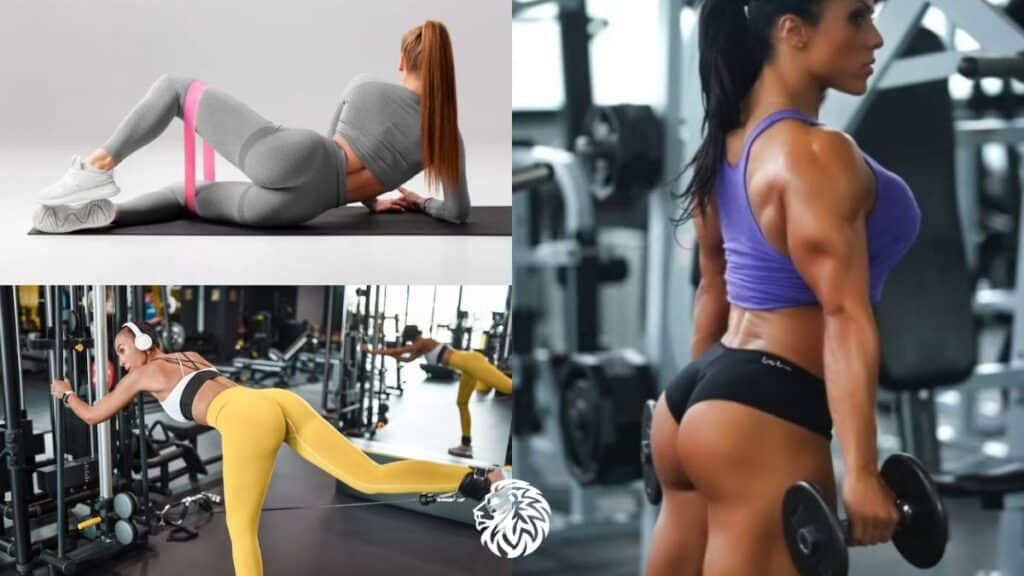
In the journey to build strong and well-shaped glutes, it’s important to be aware of common pitfalls that can hinder progress. Avoiding these mistakes is crucial for achieving effective and sustainable results.
- Overtraining and Undertraining
- Overtraining: Exercising the glutes too frequently or with excessive intensity can lead to overtraining, which hampers recovery and muscle growth. Signs include persistent soreness, fatigue, decreased performance, and increased risk of injury.
- Undertraining: Conversely, not challenging the glutes enough or infrequent training can result in little to no progress. It’s essential to provide sufficient stimulus for muscle growth through regular, progressive workouts.
- Finding Balance: Aim for a balanced routine that challenges the muscles while allowing adequate time for recovery. Generally, training the glutes 2-3 times per week with varying intensities and exercises is effective.
- Neglecting Diet or Exercise
- Diet Neglect: Failing to support your exercise routine with a proper diet can severely limit muscle growth. Nutrition is key to fuel workouts and aid in recovery and muscle repair.
- Exercise Neglect: Focusing solely on diet without a corresponding exercise regime will not lead to significant muscle development. A combination of both is essential for optimal results.
- Holistic Approach: Ensure that both diet and exercise are prioritized. A balanced diet rich in protein, complex carbohydrates, healthy fats, and micronutrients is crucial, alongside a consistent and well-structured exercise plan.
- Incorrect Form and Technique
- Importance of Form: Poor form not only reduces the effectiveness of the exercises but also significantly increases the risk of injury. Proper technique is crucial for targeting the intended muscle groups and achieving the desired results.
- Common Mistakes: Examples include improper alignment, using momentum instead of muscle engagement, and not performing movements through a full range of motion.
- Continuous Learning: Regularly educate yourself on proper exercise techniques, and don’t hesitate to seek guidance from fitness professionals. Recording your exercises to review your form or working with a trainer can be highly beneficial.
In summary, avoiding these common mistakes is integral to a successful and sustainable glute-building journey. Balancing training intensity with recovery, ensuring a harmonious blend of diet and exercise, and maintaining correct form and technique are pivotal elements for achieving your fitness goals and promoting overall health.
Conclusion
Building strong, well-defined glutes is a journey that combines dedicated exercise, a balanced diet, and a mindful approach to lifestyle factors. As we conclude this exploration, let’s recap the key points and offer some words of encouragement.
Recap of Key Points
- Exercise: Incorporate a mix of compound and isolation exercises into your routine. Compound exercises like squats, deadlifts, and lunges provide a strong foundation, while isolation exercises such as glute bridges, hip thrusts, and cable kickbacks specifically target and sculpt the gluteal muscles.
- Diet: Nutrition plays a critical role in muscle development. A diet rich in protein, complex carbohydrates, healthy fats, and essential micronutrients is necessary for fueling workouts, supporting muscle recovery, and promoting overall health.
- Lifestyle Factors: Don’t overlook the importance of adequate sleep, hydration, and stress management. These factors significantly impact muscle growth, recovery, and overall well-being.
- Progress Tracking and Adjustments: Regularly monitor your progress through measurements, strength gains, and visual assessments. Be prepared to adjust your routine and diet to continue making progress and avoid plateaus.
- Avoid Common Mistakes: Be mindful of overtraining or undertraining, neglecting diet or exercise, and maintaining correct form and technique during workouts.
Encouragement to Maintain Consistency and Patience
As you embark on or continue your journey to build and strengthen your glutes, remember that consistency is key. Muscle development is a gradual process that requires patience, dedication, and resilience. It’s important to stay focused on your goals and trust the process, even when progress seems slow.
Celebrate the small victories along the way, whether it’s lifting heavier, feeling stronger, or noticing changes in your body. Each step forward is a testament to your hard work and commitment.
Finally, remember that fitness is a personal journey. What works for one person may not work for another, so it’s crucial to listen to your body and adjust your regimen accordingly. Stay motivated, seek support when needed, and enjoy the journey toward a stronger, healthier you. Your efforts will pay off, leading not only to enhanced physical appearance but also to improved overall health and well-being.
References and Further Reading
- Healthline. (n.d.). How to get a bigger butt. Healthline. Retrieved from https://www.healthline.com/health/how-to-get-a-bigger-butt
- USA Today. (2019, May 3). How to grow glutes in the gym: What workouts to do and what to eat. USA Today. Retrieved from https://www.usatoday.com/story/life/2019/05/03/how-grow-glutes-gym-what-workouts-do-and-what-eat/3651937002/
- Muscle & Fitness. (n.d.). 30 days to booty-blasting moves. Muscle and Fitness. Retrieved from https://www.muscleandfitness.com/muscle-fitness-hers/hers-workouts/30-days-booty-blasting-moves/
- Cosmopolitan. (n.d.). The abs and butt diet. Cosmopolitan. Retrieved from https://www.cosmopolitan.com/health-fitness/a20682437/abs-and-butt-diet/
